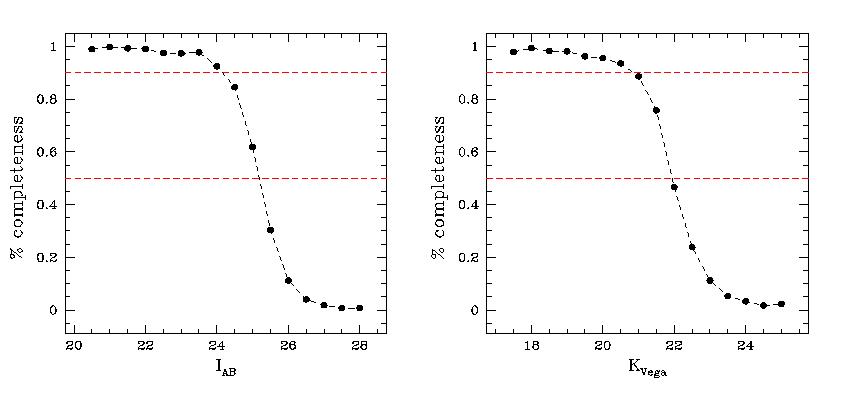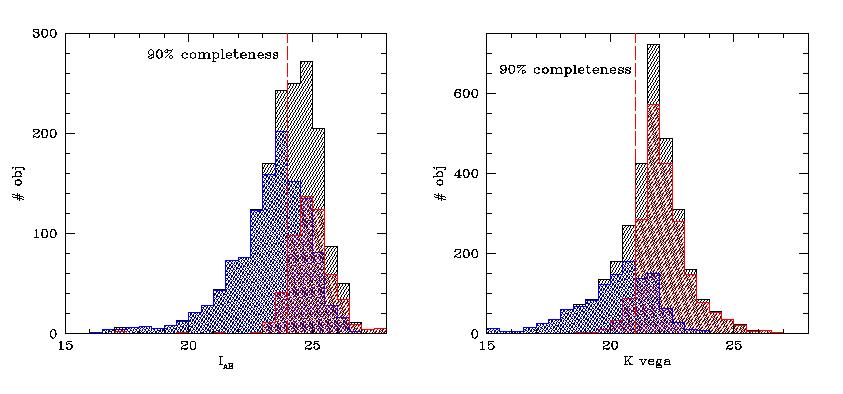
--1 Adding an artificial star image
FWHM = 0".8 arcsecs to the real image
(K or I band) the
following completeness values are obtained:

From these two
plots, 90% completeness values are I_AB = 24.0 and K_Vega = 21.0 .
It should be remembered though that at K_Vega > 20.75 contamination
rate becomes
higher than 10%, suggesting that the scientific analysis for the K-band
data in this
field should be limited to K_Vega < 20.75 .
--2 Number of objects in
SExtractor catalogues (in overlapping area, 45.5 sq arcmins,
limits defind here):
I-band --> 1702 in total,
816 down to I_AB < 24.0 .
K-band --> 3515 in total, 884
down to K_Vega < 21.0 .
Pairing according to Ra and Dec between the two catalogues results in
1175 objects
in common, 527 unpaired I-band objects,
2340 unpaired K-band objects.
--3 Magnitude distribution of
paired(blue)/unpaired(red)/total(grey) objects in the
I-band and K-band catalogues
:
I-band
K-band

One can see that down to the respective 90% completeness limit the
percentage
of paired objects is
slightly higher for I-band than for K-band:
I-band --> @ I_AB < 24.0 :
761 are paired (93%) and 55 are unpaired (7%)
K-band --> @ K_Vega < 21.0: 751 are paired
(85%) and 133 are unpaired (15%)
A visual inspection of the 133 bright (K_Vega < 21.0), unpaired,
K-band objects
shows that most of these are
bona-fide objects with no visible I-band counterparts.
(click here
for an image gallery of interesting cases). Down to K_Vega <
20.75 (77 objs)
the percentage of reliable
K-band unpaired detections is as high as 90%. A few reliable
instances are found also in
the remaining tail between 20.75 < K_Vega < 21.0 , but
there the percentage of
reliable (to my eye ...) K-band unpaired detections is of the
order of 50%.
--4 Recipe for adding the K-band info into the database.
We have three different cases:
a -- 1175 paired objects: for them the K-band info should simply
be added in
the database. Here is the file
that contains the IDs of these objects in
the database and their full K-band Sextractor information (usual format).
The K-band photometric info contained in this file should go into the
database.
b -- 527 unpaired I-band objects: for them in the database we
should
put Kmag=99.00, meaning no K-band detection. Here is the file that
contains the IDs of these objects in the database.
c -- 2340 unpaired K-band objects: I would keep * only * those
with K_Vega < 21.0.
These 133 objects should be added to the database. Here is the file that contains
their full K-band Sextractor information. In order to
attribute to them a sensible
I band magnitude, I did run SExtractor on the I-band image using the
K-band
image as a reference one, and here is the file with the full
I-band Sextractor
information for these objects.